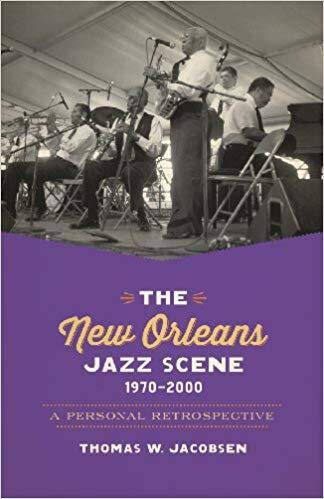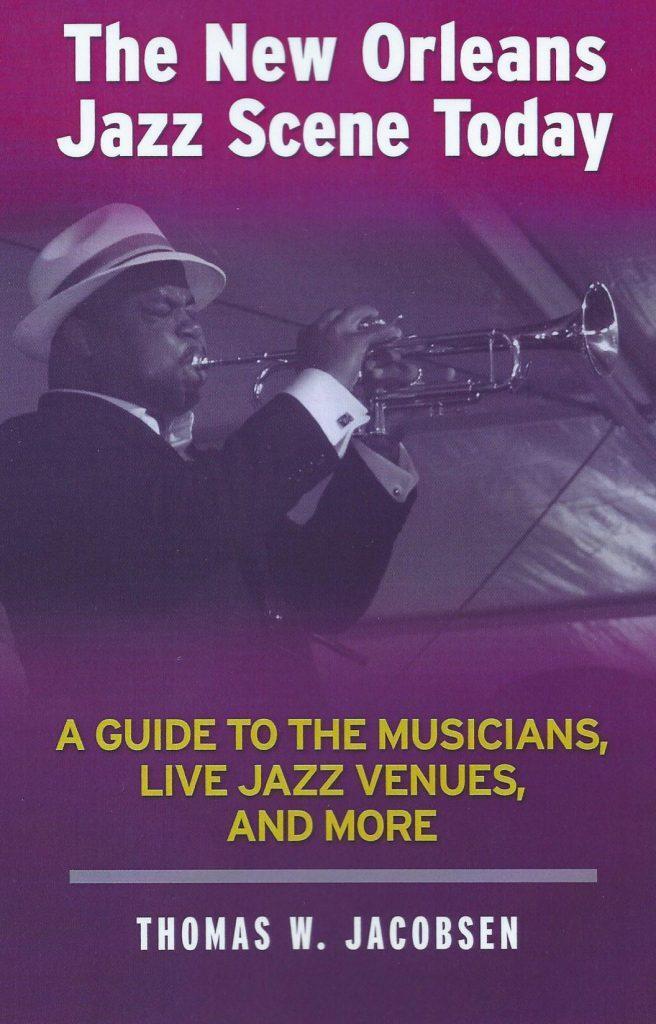Tom Jacobsen has lived many lives. He’s an archeologist, an author, a teacher and one of America’s foremost experts on the subject of New Orleans jazz.
Born, raised and educated in Minnesota, Jacobsen earned a Ph.D. in classical archaeology from the University of Pennsylvania before embarking on his first career. He logged 26 years on the faculty of Indiana University and studied prehistoric archaeology in Greece and the Aegean Basin. To that end, he worked in Greece for three decades, including 25 years as director of the excavations at Franchthi Cave which dated back to the late Stone Age.
But ever since he played clarinet and saxophone as a teenager, he has been devoted to the upbeat improvisational American music known as jazz. In the early 1950s, he was introduced to the sounds of the Big Easy via broadcasts of the New Orleans Jazz Club over the powerful radio station WWL. That Second Line syncopation stayed with the professor even as he journeyed halfway around the world to pursue his digs.
Then, after he retired from IU as a professor emeritus in 1992, Jacobsen refocused on the birthplace of jazz. Having served as a visiting professor at Tulane in 1988-89, Jacobsen fell in love with New Orleans. He lived there for a quarter century, and over those years he became deeply involved in the local music scene.
He has penned three significant studies of the state of jazz in its original city. In 2011, LSU Press published Traditional New Orleans Jazz: Conversations with the Men Who Make the Music, a collection of interviews of jazz musicians including Lionel Ferbos, Eddie Bayard, Jack Maheu, Tim Laughlin, Evan Christopher, and Irvin Mayfield.
While that’s a wonderful compilation of comments from the music makers themselves, Jacobsen’s two more recent books are even more deserving of your attention.
Both bathed in royal purple covers although issued by different publishers, the earlier book—The New Orleans Jazz Scene, 1970-2000: A Personal Retrospective—was put out in 2014 by the Louisiana State University Press and the latter—The New Orleans Jazz Scene Today: A Guide to the Musicians, Live Jazz Venues, and More—was issued this year by bluebird publishing of St. Louis, Mo., where Jacobsen now resides.
In the edition covering the years 1970-2000, Jacobsen carefully chronicles the changing face of the New Orleans jazz world as the 20th century came to a close. Drawing from personal experience and his own exhaustive research, he discusses leading musicians and bands, both traditionalists and modernists, as well as major performance venues and festivals.
Jacobsen also delves into the city’s behind-the-scenes music business, its jazz media, and the evolution of jazz education. Illustrated by more than 70 photographs, The New Orleans Jazz Scene, 1970–2000 paints a vibrant portrait of a scene that continues to evolve. Among his final thoughts, the author applauds 1990s recordings by Louisiana native Nicholas Payton and LeRoy Jones which reconstruct trad-jazz standards in unconventional styles.
In the newer book, replete with five dozen photos, Jacobsen documents the city’s courageous recovery from the effects of two disastrous hurricanes in 2005, Katrina and Rita. He takes readers on a tour of the club scene in the French Quarter, Uptown and the Marigny Triangle which includes Frenchmen Street where new clubs such as the Spotted Cat, Maison, Blue Nile, and Café Brasil continue to pop up on a regular basis.
 As in his 2014 book, the writer gives plenty of ink to jazz camps and education efforts, a sumptuous summary of the city’s countless festivals as well as some historic architectural preservation efforts. But readers will most appreciate Jacobsen’s coverage of the current array of amazing musicians, both New Orleans natives and others drawn from afar by the allure of the City that Care Forgot.
As in his 2014 book, the writer gives plenty of ink to jazz camps and education efforts, a sumptuous summary of the city’s countless festivals as well as some historic architectural preservation efforts. But readers will most appreciate Jacobsen’s coverage of the current array of amazing musicians, both New Orleans natives and others drawn from afar by the allure of the City that Care Forgot.
Clearly a fan of the clarinet, the author praises licorice stickers such as Aurora Nealand, Tom Fischer, Dr. Michael White, and the late Pete Fountain, but he also credits the musical accomplishments of brass players like Duke Heitger and Wendell Brunious and singers such as Meschiya Lake, John Boutté, and the Pfister Sisters.
Even more exciting is his account of the burgeoning brass band scene, from the Algiers BB to the Stooges BB to the all-female Pinettes.
This “feel-good music,” he writes, now decidedly influenced by Uptown funk and hip-hop, “is clearly in tune with today’s young people—both black and white—and there is little doubt that it will always be an important part of the New Orleans music scene.”
The New Orleans Jazz Scene, 1970–2000:
A Personal Retrospective
by Thomas W. Jacobsen
LSU Press, $25.00 ISBN 9780807156988
The New Orleans Jazz Scene Today
by Thomas W. Jacobsen
Bluebird Publishing, $20.00 ISBN 0986153656
Tom Jacobsen died January 15th, 2017. You can read our remembrance of him here: New Orleans jazz chronicler Tom Jacobsen dead at 81
Russ Tarby is based in Syracuse NY and has written about jazz for The Syncopated Times, The Syracuse New Times, The Jazz Appreciation Society of Syracuse (JASS) JazzFax Newsletter, and several other publications.






















